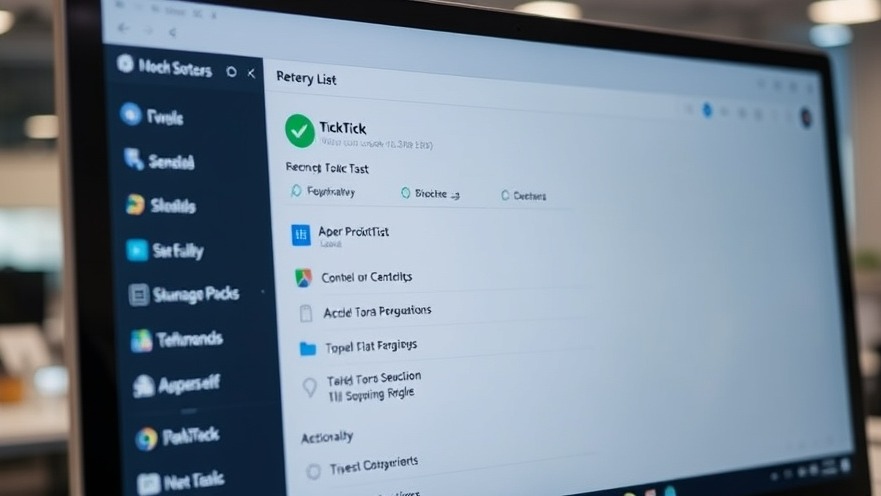
Transforming Productivity with Desktop Widgets
As digital nomads navigate their busy schedules, productivity tools become indispensable. The journey often leads to discovering tools that truly enhance efficiency. For me, the revelation came not from a complex to-do app but from a simple desktop widget in Windows 11. This became a game-changer, a shift that not only streamlined my task management but revitalized my approach to daily work.
Why Desktop Widgets Dominate the To-Do Space
Many professionals, including myself, have relied on various to-do list applications in the past. While these apps served their purpose, they often felt like just another chore to interact with. The beauty of a desktop widget lies in its persistent visibility—reminding you of what lies ahead without the usual clicks and navigations. Every time I glance at my screen, my tasks are right there, holding me accountable.
How to Set Up TickTick as Your Main Productivity Tool
With my reliance on traditional to-do applications waning, I began exploring alternatives after Microsoft removed their desktop widget feature from Microsoft To Do. The quest led me to TickTick, which not only offers a user-friendly interface but also a customizable desktop widget. Setting it up is simple: download the app, add the widget through the system tray, and voila—it’s on your desktop ready for action. With features to categorize and prioritize tasks, it fits well with the fast-paced life of a digital nomad.
Maximizing the Widget for Task Management
Once you have the widget running, adding, organizing, and tracking tasks becomes intuitive. From assigning tasks to various lists to setting deadlines, the widget facilitates everything from one spot. This eliminates the friction of navigating through multiple screens. For example, I can easily set reminders while staying focused on my current work, ultimately enhancing my workflow.
Strategies for Effective Task Management with Widgets
To get the most out of TickTick's desktop widget, start with prioritizing your tasks. Assign urgency and importance to each task, ensuring that key items stand out. Additionally, use tags effectively to group similar tasks, facilitating a smoother workflow. Finally, having tasks visible as completed with a simple checkbox reinforces progress, keeping morale high throughout the workday.
Future Trends in Productivity Tools
The advent of smart workspaces and integrated digital solutions means that tools like desktop widgets are only going to get better. We may see more widgets capable of integration with other platforms visually showing project timelines or team collaborations. As the landscape of remote work evolves, so too will the capabilities of productivity applications.
Addressing Common Misconceptions about Task Management
A common myth regarding productivity tools is that they must be complex and feature-rich to be effective. However, as my experience showed, simplicity often leads to greater adherence and effectiveness. A tool that stays on your desktop and reminds you of your tasks in real-time can lead to more productivity gains than the most complicated multi-feature app.
Conclusion: The Power of Visibility in Productivity Tools
Ultimately, the transition from traditional to-do apps to a simple desktop widget has profoundly affected my work routine. It’s a testament to how changing our approach to task management can yield significant results. If you’re seeking ways to enhance your productivity, consider exploring a direct and accessible option like TickTick’s widget. It might just change how you tackle your daily tasks!
Don't let your tasks blend into the background of your busy life. Try adding a widget to your desktop today and see how it can enhance your productivity! Prioritize your tasks better, keep them visible, and improve your workflow. Explore productivity beyond traditional apps—where every glance at your desktop could be a step towards accomplishment.
 Add Row
Add Row  Add
Add 




Write A Comment